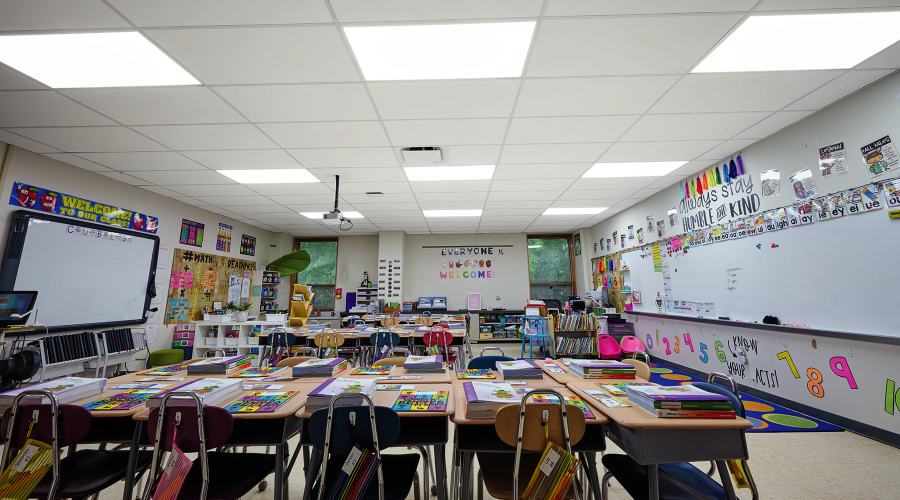Attacking IAQ Head-On
Technician training enables managers to take on IAQ problems and create healthier indoor environments
In spite of focused attention and tremendous advances over the past decade, indoor air quality (IAQ) challenges continue to impact facility operations and occupants. The most pressing issues include mold growth, offgassing of volatile organic compounds, and poor HVAC system performance. If engineering and maintenance managers hope to effectively address the issue, they must take steps to ensure that their front-line technicians are knowledgeable about IAQ issues and corrective actions.
While most facility personnel might be aware of the need for good IAQ, they often are not properly trained or directed to identify IAQ issues as they perform their daily routines. As a result, they routinely see conditions — leaking roofs and equipment, high humidity, and poor air circulation, among them — that might contribute to poor IAQ without really noticing them.
By training facility personnel to recognize conditions that might result in poor building IAQ, managers will increase the chances that technicians will recognize and correct potential problems before they trigger complaints from building occupants or damage that could cost thousands of dollars to correct.
Investigating Options
While training can be an expensive task, managers must recognize that when it comes to providing a safe and healthy workplace, training is an investment. Fortunately, managers have more options than ever in selecting programs that address their organizations’ needs while providing the most suitable format for employees. And they can achieve both goals at a cost that is within most budgets.
Structured programs are available that take place in-house or at an off-site location. Maintenance technicians can attend seminars or sponsored informal discussions. Managers can hold formal and informal discussions of the IAQ concerns and activities. Self-training materials are available, as well as on-line programs.
Identifying Students
While training is an important element in any program designed to improve building IAQ, but managers must take steps to ensure the training program delivers the best possible benefit.
The first step is to identify in-house technicians who could have an impact on the building’s IAQ and tailor the program specifically to the needs of those personnel.
For example, custodians and HVAC maintenance technicians both can have a major impact on the building’s IAQ. But their impact occurs in different areas, requiring different training programs for the two groups if the program is to be effective.
The training program is an essential element in any successful IAQ program, but it is not sufficient by itself. Managers must establish a mechanism for facility personnel to deliver information back to the manager for action. In some cases, the cause of an IAQ problem and the necessary corrective action will be obvious. But in other cases, a more detailed investigation might be required, or funding must be obtained to implement the necessary action.
Tools of the Trade
A good training program will help to get facility personnel thinking about IAQ issues and problems as they go about their daily routines, and in many cases they will be able to recognize not only the IAQ problem but also the solution.
In some instances, however, neither the problem nor the solution is obvious. There also will be instances where managers might want to document conditions in a given space for legal or administrative reasons.
In these cases, it will be necessary to use diagnostic tools to take measurements for specific contaminants. Recording and tracking measurements also is useful when evaluating the effectiveness of specific IAQ measures that have been implemented. Some of these diagnostic tools are rather complex in their operation, so their proper use will require additional training.
Technicians can use a range of diagnostic tools to identify not only the source of IAQ problems but also their magnitude. For example, IAQ monitors are available to measure for an array of parameters and materials, including carbon monoxide, carbon dioxide, relative humidity, air temperatures, and air flow rates.
Monitors also can count the number of particulate contaminants in the air. They can identify and quantify the presence of volatile organic compounds. Depending on the application, tools are available that provide a direct readout and store it so the technician can download it later for more thorough analysis and tracking.
Managers can purchase or rent these tools, or contract for an outside consultant to use them in the facility. There are even specially trained dogs that can be used to detect the presence of mold.
Looking Ahead
So far, the emphasis of most IAQ programs has been on reactive measures. A technician identifies a problem in an application and implements a specific solution to correct the problem. More often, though, the emphasis is shifting from reactive to proactive measures. IAQ problems no longer are seem as isolated. Instead, technicians view them as part of a much larger problem that might involve poor building design or poor building maintenance.
The best approach to solving building IAQ problems is to eliminate the problem before it occurs. IAQ is now a major design consideration, from selecting construction materials that will not expose occupants to volatile organic compounds and other hazardous substances, to designing HVAC system designs to meet or exceed the ventilation requirements for the application.
Manufacturers are incorporating new technologies, such as carbon monoxide and carbon dioxide monitors, into their systems to regulate ventilation air. Designers are taking care when applying these systems to reduce the chances of drawing contaminants into a building from poorly placed ventilation air intake ducts.
Good building designs are likely to give maintenance and engineering managers a facility that is free of IAQ problems when it is new. But as systems and components age, their performance often deteriorates.
Caulking fails, allowing water to enter the building envelope. Building temperature control systems go out of calibration, resulting in poor performance of HVAC system components. Plumbing systems, leak causing flooding.
To keep building and their systems performing the way that they were designed, managers must ensure they are maintained properly. Good maintenance practices— including diagnosing IAQ problems — not only will help to sustain healthy indoor environments. They will improve the service life of components.
James Piper is a national facilities consultant based in Bowie, Md. He has more than 25 years of experience in facilities management and maintenance issues.
Related Topics:











